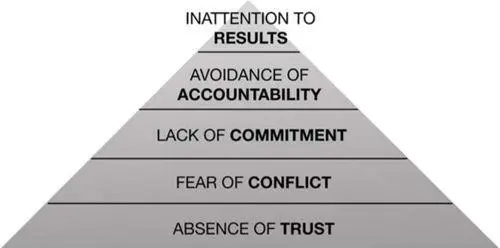Tan, Chade-Meng - Search Inside Yourself - The Unexpected Path to Achieving Success, Happiness (and World Peace)
Здесь есть возможность читать онлайн «Tan, Chade-Meng - Search Inside Yourself - The Unexpected Path to Achieving Success, Happiness (and World Peace)» — ознакомительный отрывок электронной книги совершенно бесплатно, а после прочтения отрывка купить полную версию. В некоторых случаях можно слушать аудио, скачать через торрент в формате fb2 и присутствует краткое содержание. Год выпуска: 2012, Издательство: Harper Collins, Inc., Жанр: Старинная литература, на английском языке. Описание произведения, (предисловие) а так же отзывы посетителей доступны на портале библиотеки ЛибКат.
- Название:Search Inside Yourself: The Unexpected Path to Achieving Success, Happiness (and World Peace)
- Автор:
- Издательство:Harper Collins, Inc.
- Жанр:
- Год:2012
- ISBN:нет данных
- Рейтинг книги:4 / 5. Голосов: 1
-
Избранное:Добавить в избранное
- Отзывы:
-
Ваша оценка:
- 80
- 1
- 2
- 3
- 4
- 5
Search Inside Yourself: The Unexpected Path to Achieving Success, Happiness (and World Peace): краткое содержание, описание и аннотация
Предлагаем к чтению аннотацию, описание, краткое содержание или предисловие (зависит от того, что написал сам автор книги «Search Inside Yourself: The Unexpected Path to Achieving Success, Happiness (and World Peace)»). Если вы не нашли необходимую информацию о книге — напишите в комментариях, мы постараемся отыскать её.
Search Inside Yourself: The Unexpected Path to Achieving Success, Happiness (and World Peace) — читать онлайн ознакомительный отрывок
Ниже представлен текст книги, разбитый по страницам. Система сохранения места последней прочитанной страницы, позволяет с удобством читать онлайн бесплатно книгу «Search Inside Yourself: The Unexpected Path to Achieving Success, Happiness (and World Peace)», без необходимости каждый раз заново искать на чём Вы остановились. Поставьте закладку, и сможете в любой момент перейти на страницу, на которой закончили чтение.
Интервал:
Закладка:
This person has feelings, emotions, and thoughts, just like me .
This person has, at some point in his or her life, been sad, disappointed, angry, hurt, or confused, just like me .
This person has, in his or her life, experienced physical and emotional pain and suffering, just like me .
This person wishes to be free from pain and suffering, just like me .
This person wishes to be healthy and loved, and to have fulfilling relationships, just like me .
This person wishes to be happy, just like me . Loving Kindness
Now, let’s allow some wishes to arise.
I wish for this person to have the strength, the resources, and the emotional and social support to navigate the difficulties in life .
I wish for this person to be free from pain and suffering .
I wish for this person to be happy .
Because this person is a fellow human being, just like me .
(Pause)
Now, I wish for everybody I know to be happy .
(Long pause) Closing
End with 1 minute of resting the mind.
Whenever we’ve asked participants how they felt during the exercise, the most common response has been “happy.” They discovered that being on the transmitting end of kindness is a calming and happy experience, often at least as good as being on the receiving end. This seems a little counterintuitive, but it makes sense once you remember we are highly social creatures and even our brains are pre-wired to be social. Given how social we are and how social we need to be to survive, it makes sense for kindness toward other people to be intrinsically rewarding to ourselves; it is probably an important part of our survival mechanism. One study even suggests that performing one kind act a day over just ten days can measurably increase your happiness. 9
In other words, kindness is a sustainable source of happiness—a simple yet profound insight that can change lives.

“Are you sure this is how you’re supposed to do this Just Like Me exercise?”
How to Save Your Marriage and Other Relationships
One of the best things about the above practice is it can be used in any situation to heal relationships. I’ve found it extremely useful for dealing with conflicts. Whenever I have a fight with my wife or a co-worker, I go to another room to calm down and after a few minutes of calming down, I do this exercise in stealth. I visualize the other person in the next room. I remind myself that this person is just like me, wants to be free from suffering just like me, wants to be happy just like me, and so on. And then I wish that person wellness, happiness, freedom from suffering, and so on. After just a few minutes of doing this, I feel much better about myself, about the other person, and about the whole situation. A large part of my anger dissipates immediately.
The next time you get into conflict with someone you care about or someone you work with, I suggest doing this practice. It may do wonders for your relationships. I reckon this practice is a major reason being married to me does not totally suck.
Traditional Practice of Loving Kindness
The Loving Kindness practice above is our adaptation of an old practice called Metta Bhavana, or Loving Kindness Meditation. The traditional form of the practice is a little more structured and moves at a slower pace (which is funny, since I am an engineer and my adaptation of it is to make it less structured).
Like every other meditation practice, the traditional Metta Bhavana starts with a few minutes of resting the mind. Once some mental calmness is established, you invite a feeling of kindness toward yourself. To do this, quietly repeat these phrases to yourself:
May I be well.
May I be happy.
May I be free from suffering.
After a few minutes of this, invite a feeling of kindness toward someone you already like or admire, someone for whom it is easy to create loving kindness. If you like, you may use the above phrases for that person. May he or she be well, happy, and free from suffering.
After a few minutes of that, do the same for a neutral person, or somebody you do not particularly like or dislike, or whom you may not even know particularly well. A few minutes later, do it toward a difficult person, or somebody you dislike or who creates a lot of difficulty in your life. May he or she be well, happy, and free from suffering. Finally, extend the feeling to all sentient beings. May all sentient beings be well, happy, and free from suffering.
One of the best things about this traditional form is that by the time you get to the difficult person, your mind has already marinated in loving kindness, making it easier for you to break your mental habits about that particular person. For example, if your mental habit is to naturally generate a feeling of dislike every time you think of Rick, and you use Rick as the object of Metta Bhavana every day, after a while, your mind may start to associate Rick with a positive feeling since every time you think of Rick in that meditation, your mind has been soaked in loving kindness. After a while, you may find yourself no longer disliking Rick, and you may have to find a new difficult person for Metta Bhavana. (Eventually, you may even run out of people you dislike, which can be annoying for the purpose of this meditation, but is not a bad problem to have, really).
Feel free to use this traditional practice if it works better for you.

Bringing Out the Best in People
In the previous sections, we learned practices for developing foundational empathy skills. In the next few sections, let us focus on practices that help us facilitate the growth of others and bring out the best in them.
Establishing Trust Is Good for Work
Empathy is nice, but it is not just nice; it is also essential for helping you succeed at your work, especially if your work involves building a team or coaching, mentoring, and caring for others. There is one basic ability that enables you to be highly effective at those activities, and that is your ability to establish trust. Trust me on that one.
Empathy helps us build trust. When we interact with empathy, we increase the likelihood that people feel seen, heard, and understood. When people feel those things, they feel safer and more likely to trust the person who understands them.
Key thinkers on effectiveness at work have trust as the foundation of their practices and approaches. For example, Marc Lesser, an accomplished executive coach, suggests the coaching /mentoring cycle to involve these steps:
1. Establish trust.
2. Listen (by “looping” and “dipping”).
3. Ask probing and open-ended questions.
4. Provide feedback.
5. Partner to create options and practices.
The most important step is the first step, establishing trust. Trust is the foundation of a coaching /mentoring relationship. It is very simple: for you to work with your mentee, he must be open to you. The more he opens himself up, the more effectively you can work with him, and the more he trusts you, the more likely he is to be open. It is that simple. If there is no trust, this mentoring relationship will just be a waste of time (unless you are having doughnuts during your mentoring conversations, in which case the doughnuts make up for some of the time wasted, but this is not a suggestion to replace trust with doughnuts).
Читать дальшеИнтервал:
Закладка:
Похожие книги на «Search Inside Yourself: The Unexpected Path to Achieving Success, Happiness (and World Peace)»
Представляем Вашему вниманию похожие книги на «Search Inside Yourself: The Unexpected Path to Achieving Success, Happiness (and World Peace)» списком для выбора. Мы отобрали схожую по названию и смыслу литературу в надежде предоставить читателям больше вариантов отыскать новые, интересные, ещё непрочитанные произведения.
Обсуждение, отзывы о книге «Search Inside Yourself: The Unexpected Path to Achieving Success, Happiness (and World Peace)» и просто собственные мнения читателей. Оставьте ваши комментарии, напишите, что Вы думаете о произведении, его смысле или главных героях. Укажите что конкретно понравилось, а что нет, и почему Вы так считаете.







![Chade-Meng Tan - Search Inside Yourself - Increase Productivity, Creativity and Happiness [ePub edition]](/books/703803/chade-thumb.webp)



